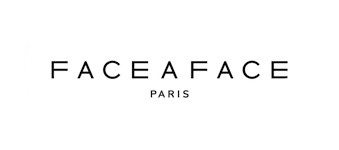Nearsightedness, or myopia, is becoming increasingly common among children. While myopia on its own is benign and can be corrected using glasses, high myopia can cause more serious eye problems later in life, including blindness. There is no cure for myopia, but recent studies have suggested ways to slow its progression in children and teenagers.
Difference Between Low & High Myopia
Myopia occurs when the eye becomes elongated, making nearby objects visible while distant objects remain blurry.
Low Myopia
Low myopia is the most common, usually defined by a needed prescription of -0.25 to -3.00 diopters (the unit of measurement for eye prescriptions). It’s easily corrected with eyeglasses or contact lenses but can also be corrected with laser eye surgeries or orthokeratology (Ortho-K).
Children with low myopia might find it difficult to see distant objects clearly. Your child may be struggling with myopia if you notice that they are squinting to see distant objects, holding items closer to their eyes, or complaining of headaches.
While it doesn’t necessarily pose a severe risk, studies have shown that the known ocular diseases linked to myopia don’t offer a “safe” threshold, even including myopic maculopathy.
High Myopia
High myopia is less common but more severe, defined by a needed prescription of -5.00 diopters or more. Since high myopia causes the eye to elongate excessively, this stresses the retina and other structures of the eye.
While poor visual acuity is the cornerstone of high myopia, this condition can lead to more serious eye health complications like:
- Myopic Maculopathy
- Retinal Detachment
- Cataracts
- Glaucoma
These complications can potentially cause blindness. As such, high myopia requires more vigilant monitoring and proactive treatments.
How Much Myopia is Legally Blind?
Legal blindness is a term that often confuses people. It doesn’t mean total blindness but rather a significant loss of vision. In Canada, a person is legally blind if their visual acuity is 20/200 or worse in their better eye, even with corrective lenses.
While myopia itself doesn’t directly cause blindness, extremely high myopia can lead to severe complications that result in significant vision loss.
It’s essential to understand that high myopia doesn’t automatically mean your child will become legally blind. However, the complications associated with high levels of myopia necessitate regular eye examinations and appropriate management strategies.
Can Myopia Be Reversed?
Unfortunately, myopia cannot be entirely reversed. Once the eyeball has elongated, it can’t return to its original shape. However, each diopter matters. Slowing myopia progression before it reaches high myopia levels (or even once it has) is shown to reduce the likelihood of someone developing myopic maculopathy.
Fortunately, treatments available can help manage the condition and slow its progression.
Proactive Ways to Reduce Myopia
While genetics play a role in whether or not your child develops myopia, there are also external environmental factors that you have control over.

Before your child is diagnosed with myopia, consider the following:
- Encouraging outdoor activities: Natural light and the opportunity to focus on distant objects can help maintain eye health; studies have shown that children who spend more time outdoors are less likely to develop myopia.
- Limiting screen time: Prolonged contact with screens can exacerbate myopia.
- When using screens, encourage regular breaks using the 20-20-20 rule: every 20 minutes, look at something 20 feet away for at least 20 seconds.
- Committing to regular eye check-ups: These are crucial for early detection and management of myopia.
Potential Treatments
Once myopia is diagnosed, there are ways to slow its progression to ensure that when the eye does stop growing, that it is not nearly as myopic as it would otherwise have been, though it’s essential to remember that none of these treatments will “cure” myopia.
- Peripheral defocus glasses: Designed to focus light in the peripheral vision behind the retina while maintaining clear central vision, these glasses aim to slow down eye elongation and help manage myopia progression, and are our primary myopia control option at Warman Eyecare.
- Peripheral defocus contact lenses: These are for children between ages 6-12 and intentionally focus on sharpening central vision and blurring peripheral vision in an attempt to correct myopia.
- Daily prescription atropine eye drops: In low doses, this can help prevent myopia progression when used regularly for several years.
- Orthokeratology (Ortho-K): This requires wearing specially designed hard contact lenses overnight to temporarily reshape the cornea (though it poses a risk of infection if not cleaned as needed).
While the thought of nearsightedness causing blindness can inspire panic, it’s important to remember that myopia only results in blindness in severe cases with complications. Early detection and proactive management are crucial to preventing future vision loss.
See the World More Clearly
Talking to your optometrist about your or your child’s concerns and unique eye needs can help you pick a myopia management strategy that best suits your lifestyle.
YXE Vision Group understands how much you care about your family’s vision and works with you to make your eyecare experience easier and better. Contact us today to schedule a comprehensive exam and put to rest any anxieties you may have about myopia.









